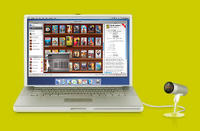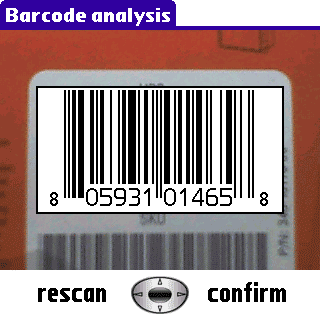How does a business card in China disrupt Physical World Connection?
A consumer in China shows us how China is starting to use 1D barcodes on business cards. The ability to generate and scan a 1d barcode with a mobile phone has enormous implications.

CamClic allows anyone to create AND scan 1D barcodes (in addition to 2D codes) with a camera phone.
The CamClic solution has solved one of the biggest hurdles of Physical World Connection, scanning a 1d code with a mobile phone.
What does that really mean to advertisers, brands, search engines and consumers?
If the barcodes that are already on packaging can now be scanned with a mobile phone, and consumers can create their own 1d barcode, has the mobile code standard already been established?
There are over 3 billion unique barcodes. A 12 oz can of Coke has one, the 16 oz has another etc. While that 12 oz can of Coke has one physical world hyperlink, it represents millions of ways to directly connect a consumer to Coke.
Billions of individual items/brands represent trillions of physical world hyperlinks waiting to be connected to the Net.
Every product with a barcode, Coke cans, Fergie CDs, just need to be "turned on". Google can add over 3 billion pages of unique data to their index by assigning a URL (website) AND FUNCTIONS to a barcode. Functions could include (coupons, video, consumer report, warranty, tech support, reorder etc)
Do you think barcode owners could find uses for this? More importantly, would consumers?
The killer app for Mobile Advertising will be a portal/platform that can “turn on” AND create physical world hyperlinks.
I explained how Microsoft can beat Google this way.
Up until now, 1d codes have been kept in a closed network. Cashiers and stockboys scan a 1d code for product information and checkout. The information delivered FROM the barcode comes from servers inside the store network....(intranet).
You can also type in a UPC code into a search engine and get a general summary of the product and manufacturer.
What happens when Google, Apple or Microsoft introduce a mobile barcode scanning application that allows anyone to scan a barcode and be connected to the Net. This will open the network for trillions of objects.

How does a barcode threaten search engines?
The physical world hyperlink will now allow website owners to direct traffic to their site with a physical object rather than a search engine. A barcode on a product replaces "For more information visit our website". That’s what I call disruptive.
However, here's how Google connects the physical world
Great thought goes into the packaging of a product, but one thing is put on every package that brands have never been able to use before, until now. The barcode. Its universal, can be scanned/typed, doesn’t take up any more room on the product to market, and can now provide a direct connection w/ the Internet…a Physical World Hyperlink.
In their massive content land grab, would Google ever consider acquiring the UPC database? Would they need to if they could just link them using their "Google Click" mobile application?
Google thrives on acquiring and creating content, the other opportunity I see for Google with physical world hyperlinks is social networking.
Google could offer bloggers, website owners, MySpacers or their own social network site a chance to create their own 1D code (physical world hyperlink) . If both brands and consumers used this type of mobile code, wouldn't that make it the default "standard" for mobile code scanning?
CamClic now makes it possible to connect all items with a 1d barcode to the Internet using a mobile phone AND allows users to create their own physical world hyperlink. This will have a huge impact on advertising and social networking.
Comments, thoughts?



































